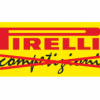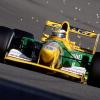Hi all,
There are several heated discussions about preferences of engine lay-outs going on, and I admit I have liked participation in that to make my point of view clear as well.
But here is a question I can't find decent answers for yet.
I am afraid this is a very technological matter, it has nothing to do with appreciation of a certain engine concept yes or no. And it is very likely a question more aimed at people with engineering knowledge.
Moderators: If this is the wrong forum, please move it to the right one.
First: capsule history.
When turbocharged engines were banned from 1989 on we saw a mix of 3.5 liter V8, V10 and V12's appear. Gradually the focus went onto the V10 as appearing to be the best compromise between V8 and V12, When engine size was reduced from 3.5 liter to 3 liter in 1995 we saw a further shift to V10s, even Ferrari sacrificed their hallowed V12 for the sake of efficiency and came with V10s. Common sense at last.
In the mid eightties, writers Gerth Hack and Fritz Indra had already predicted in their book "Formel 1 Motoren" that for a 3 liter engine the V10 could well be the ideal compromise configuration for all kind of reasons I won't discuss here, would be too much. What they had done was comparing the advantages and disadvantages of the known V8 and V12 concept to another and they concluded that a V10 appeared to be the best of both worlds.
Well, for 3.5 liters and eventually for 3 liter engines as well, it appeared they were indeed right.
Now it has been stated that about 2000 or so, FIA mandated the use of V10 configuration engines in order to avoid yet another needless spending of fortunes to develop a V12. The story I have heard is that Toyota had looked into the V12 concept another time and were considering to make their F1 debut in 2002 with a V12. But FIA interfered in that and made V10's mandatory in order to avoid engine builders having to spend money yet again in sorting out a new confiuration of engine instead of developing the current one.
End capsule history
My question is the following.
What kind of reasons did Toyota and/or others to consider a V12 engine again? I can't come up with any good arguement that makes the use of a V12 making any sense compared with a V10.
The old disadvantages were still there: Compared with V10s, V12s were larger, heavier, required more fuel which has to be stored in the car, together with the larger engine. Besides that, a V12 might produce more power, certainily at high revs and even smaller pistons may wll have raised the obtainable rpm levels (hence more power) bot the torque of such engines would have been so low that such a V12 would have had a very tiny usable rev range, thus difficult to drive.
The V10 had proven itself to be the best compromise by far by now, so what was by that time the new invention or advantage that a V12 powered car could have had over a V10 engined one? was it engine related or had it something to do with the overall packing of a car?
Thanks,
Regards,
Henri



















